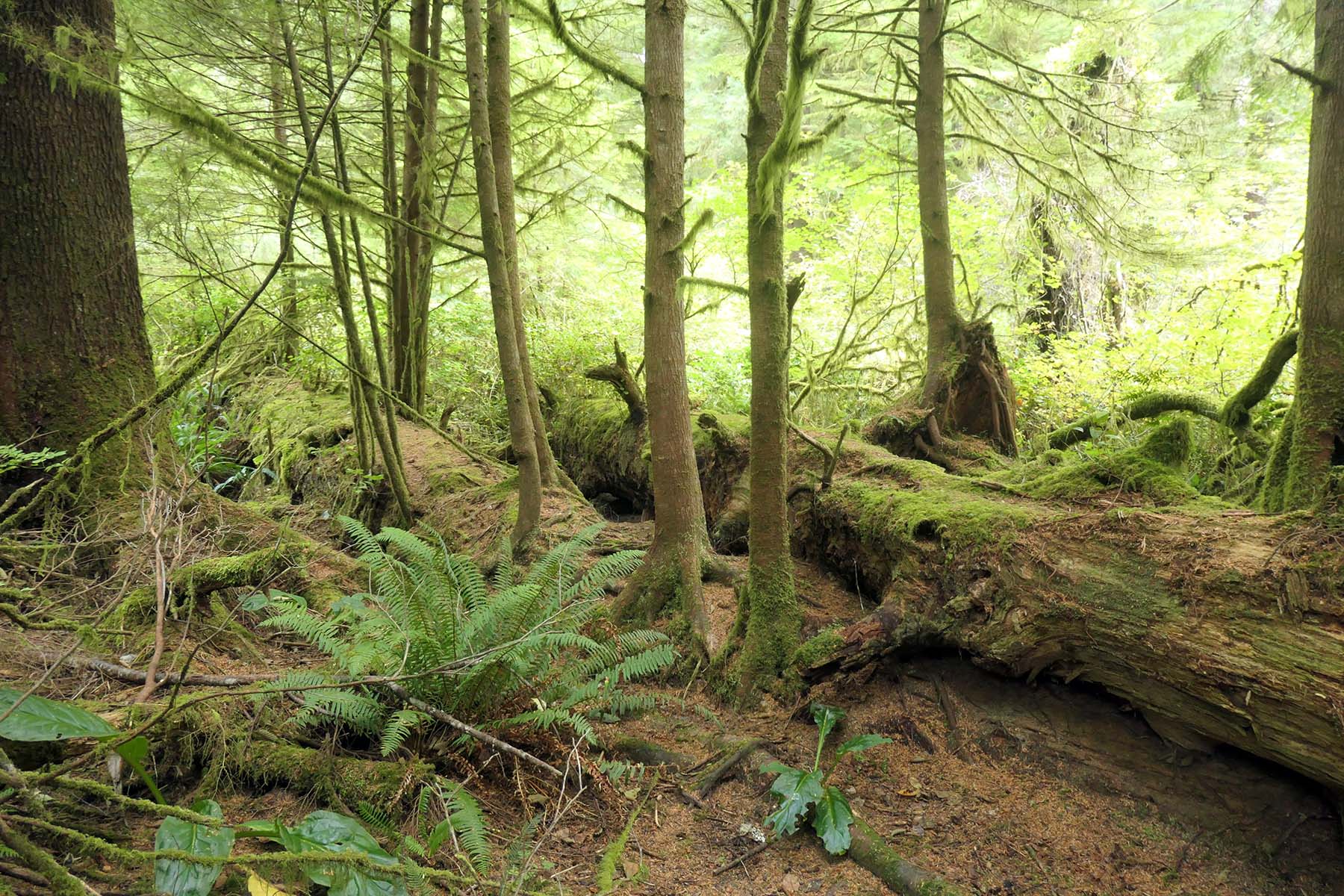Walk with me. It’ll transport you into a world of wonder, visions of fairy tales where gnomes and goblins, witches and wolves cannot be far behind. Unless they’re sent into hiding by the onslaught of photographers…



The short and wonderfully wheelchair accessible hike through a 45 acres coastal marsh and old-growth cedar preserve can be found in Rockaway Beach near Garibaldi. Three years ago, a universal access, raised boardwalk opened, leading across a boggy swamp next to Saltair Creek, filled with humongous skunk cabbages, salal, pine snags and alders. Unfortunately there are very few places equipped with benches across the one mile loop, so that people who have difficulty walking without pauses might have a hard time.




Fungi, wild fuchsias, alder berries and late asters frame the walkway





Part of the loop, if you want to make a full circle rather than an in and out, is even more enchanted, since the absence of man-made structures allows you for a short moment to imagine yourself in a prehistoric temperate rain forest in all its sizable glory, roots and all.


Eventually you reach the largest of them all, an old red cedar, 154 feet in height and almost 50 feet in circumference that stands like a giant among the hemlocks and the Sitka spruce. It is said to be between 500 and 900 years old, in terms of mass one of our state’s biggest trees. It nurses younger hemlocks who send their roots down into the decaying remnants of the trunk.




Old growth forests have played a major role in the fairy tales of my childhood, places of danger and dread, but also of shelter and heroic quests from which the hero/ine emerged triumphant. Think of Little Red Riding Hood, Hansel and Gretel, Snow White or Rapunzel in their various woods. Forests have been places of lawlessness but also hiding spots for justice warriors (Hello, Robin Hood!) If you are interested, there is a lovely book on forests in the cultural imagination and what their climate-caused disappearance would imply (written and anticipated already in 1992), by Robert Pogue Harrison – Forests: The Shadow of Civilization.
“If forests appear in our religions as places of profanity, they also appear as sacred. If they have typically been considered places of lawlessness, they have also provided havens for those who took up the cause of justice and fought the law’s corruption. . . . In the religions, mythologies, and literatures of the West, the forest appears as a place where the logic of distinction goes astray.”


Just like the airy, feathery boughs of cedars contrast with the bulky forms of century old root systems, so do enchantment and disenchantment. For me as a kid, hiking in the Böhmewald during visits with my grandparents primarily meant magic: seeing birds, finding mushrooms, being surrounded by sounds and smells not quite familiar. But a sense of fear was never far behind. You could get lost, there might be predators (on 4 and 2 legs, we were warned,) and the remnants of the Brother Grimm indoctrination lurked on. Did witches exist, after all?



That fear has never quite left. Every time I watch a movie that starts with someone running or stumbling through a forest, I start to tense up, knowing that doom is impending. It doesn’t help that we now regularly get the view from above, these endless drone shots of trees and trees beyond horizon. Have you noticed how often films and shows use these tools with abandon in about any land- or cityscape, glad for their new toys? Of course I watch a lot of movies, junk and otherwise, evoking the forest, Hanna, The Revenant, Leave No Trace, The Blair Witch Project, and lately The Lord of the Rings: Rings of Power among them, where I have developed some affection for a plucky harfoot heroine named Nori. But I digress.
The sense of mystery remains as well. Woods are so incredibly nuanced, in their layers, their simultaneous presence of life, decay and death in all imaginable stages, their function to provide food and materials for survival, crowned by their ability to clean the air for us – I stand in awe, every time these thoughts resurface during visits to the forests.






According to the U.N. we are losing 2.5 billion acres of forest – the size of Iceland – every single year. As Olivia Campbell put it:
“Climate change is our collective moral test, the physical manifestation of our sins of gluttony, sloth, greed, selfishness, consumerism, and unchecked industrialism. We have entered the threshold of a forest filled with lush, healthy greenery and teeming with diverse wildlife. The question is, will there be any woods left by the end of the story, or have we run out of places to hide?”

Music, how could I not, is about a fairy tale set in the woods….

